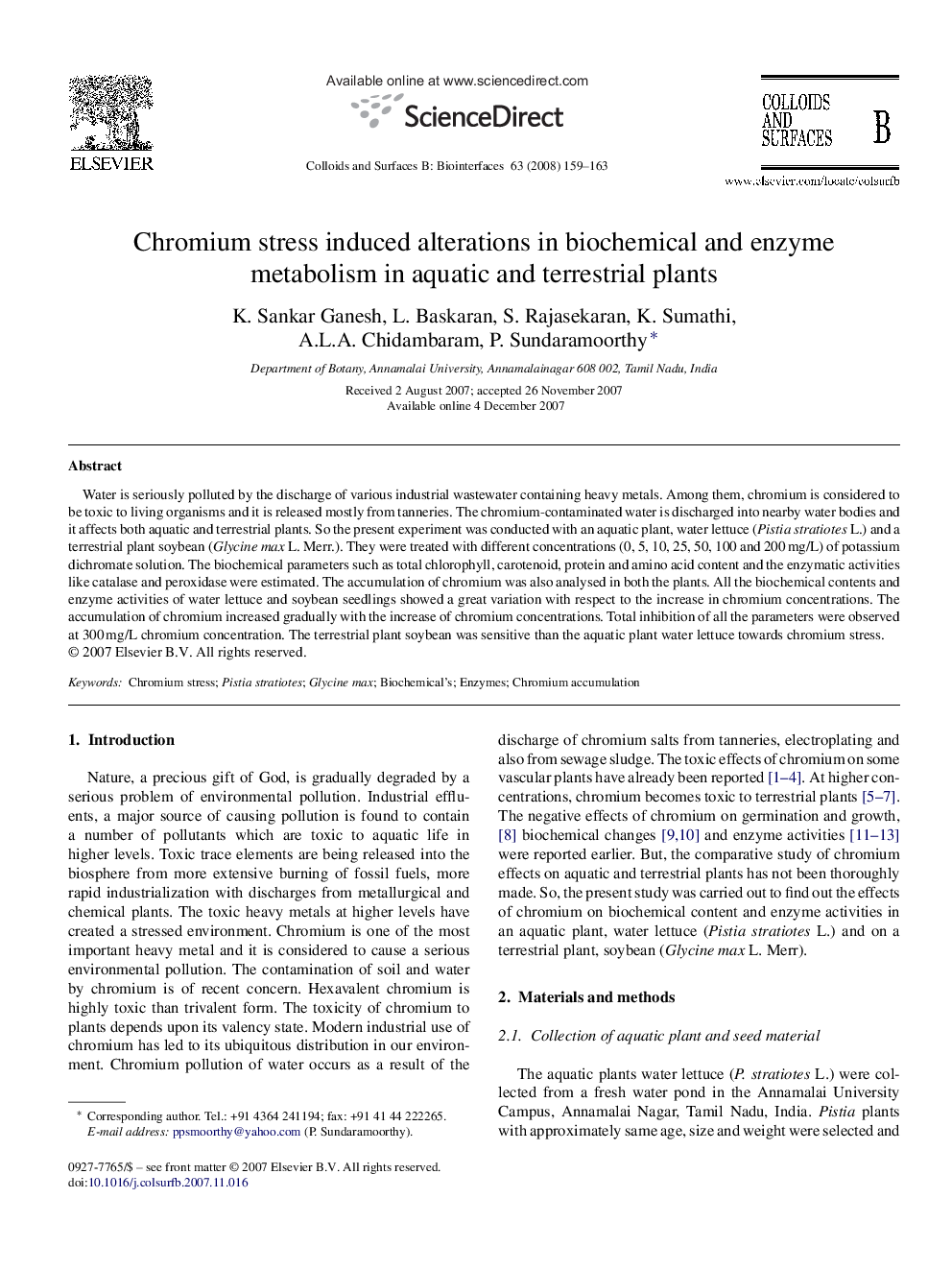| Article ID | Journal | Published Year | Pages | File Type |
|---|---|---|---|---|
| 602347 | Colloids and Surfaces B: Biointerfaces | 2008 | 5 Pages |
Water is seriously polluted by the discharge of various industrial wastewater containing heavy metals. Among them, chromium is considered to be toxic to living organisms and it is released mostly from tanneries. The chromium-contaminated water is discharged into nearby water bodies and it affects both aquatic and terrestrial plants. So the present experiment was conducted with an aquatic plant, water lettuce (Pistia stratiotes L.) and a terrestrial plant soybean (Glycine max L. Merr.). They were treated with different concentrations (0, 5, 10, 25, 50, 100 and 200 mg/L) of potassium dichromate solution. The biochemical parameters such as total chlorophyll, carotenoid, protein and amino acid content and the enzymatic activities like catalase and peroxidase were estimated. The accumulation of chromium was also analysed in both the plants. All the biochemical contents and enzyme activities of water lettuce and soybean seedlings showed a great variation with respect to the increase in chromium concentrations. The accumulation of chromium increased gradually with the increase of chromium concentrations. Total inhibition of all the parameters were observed at 300 mg/L chromium concentration. The terrestrial plant soybean was sensitive than the aquatic plant water lettuce towards chromium stress.
